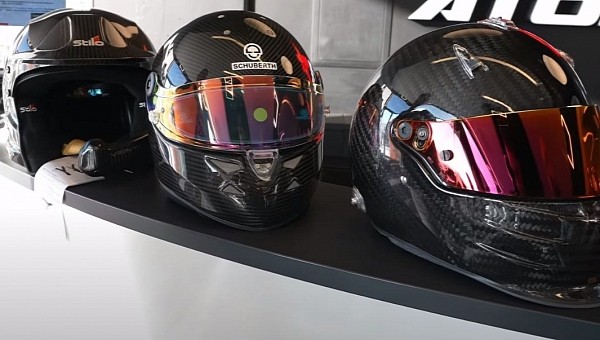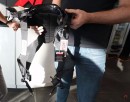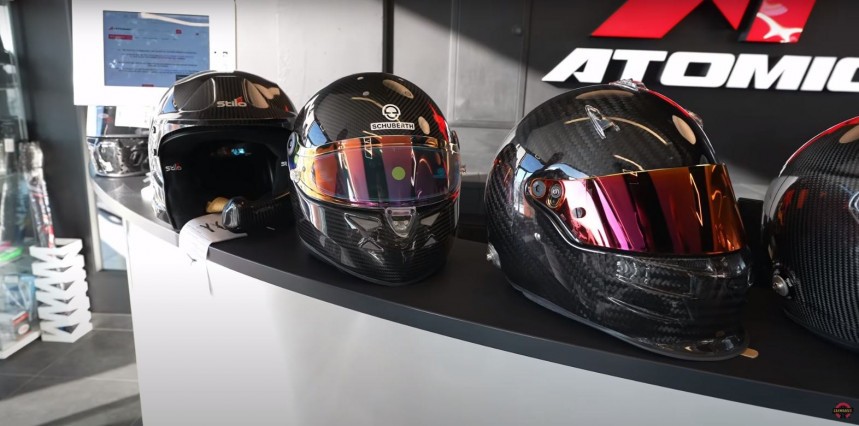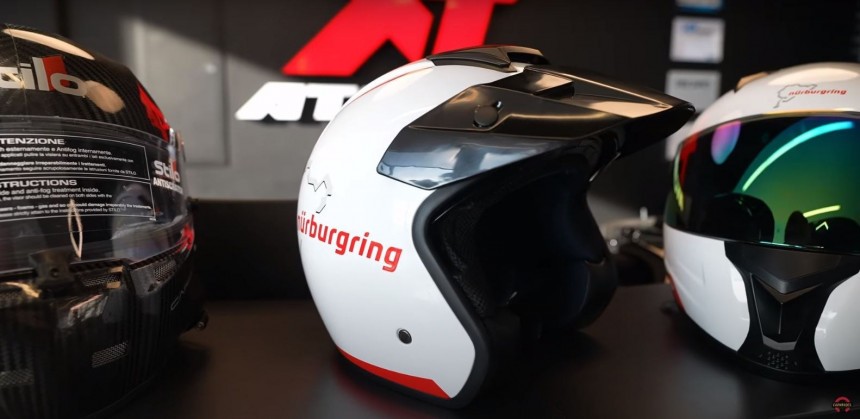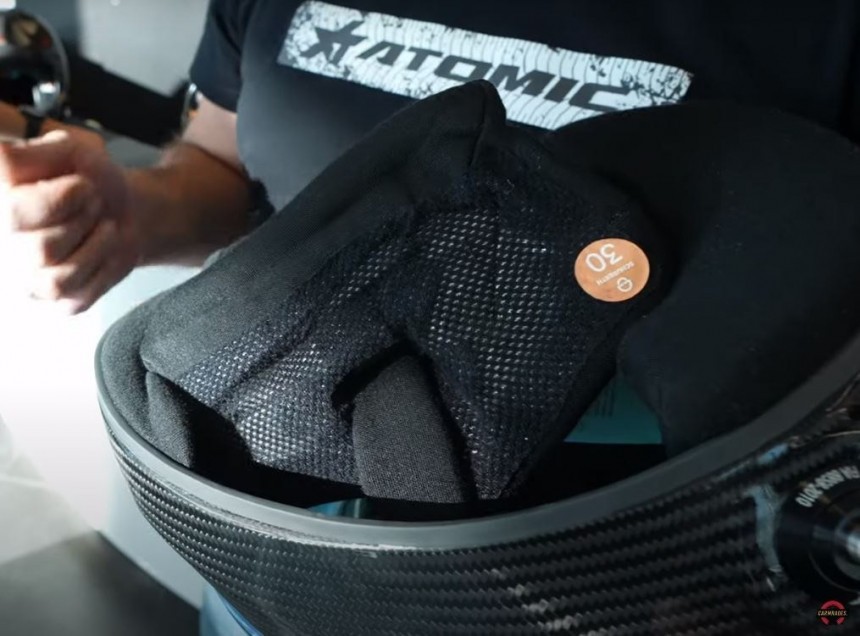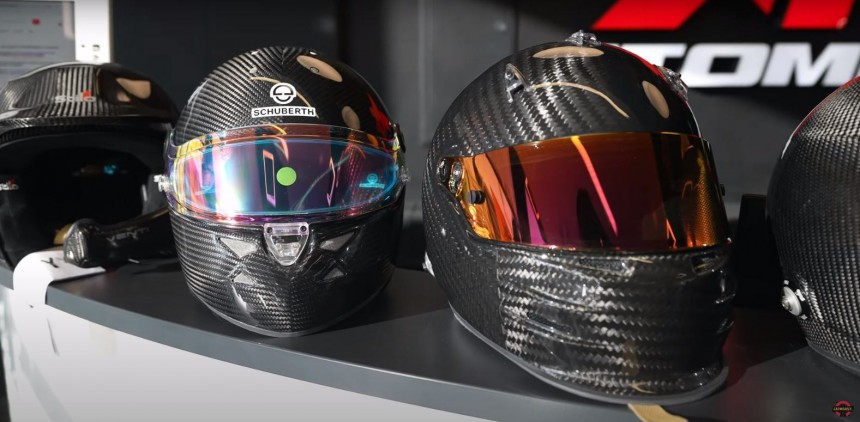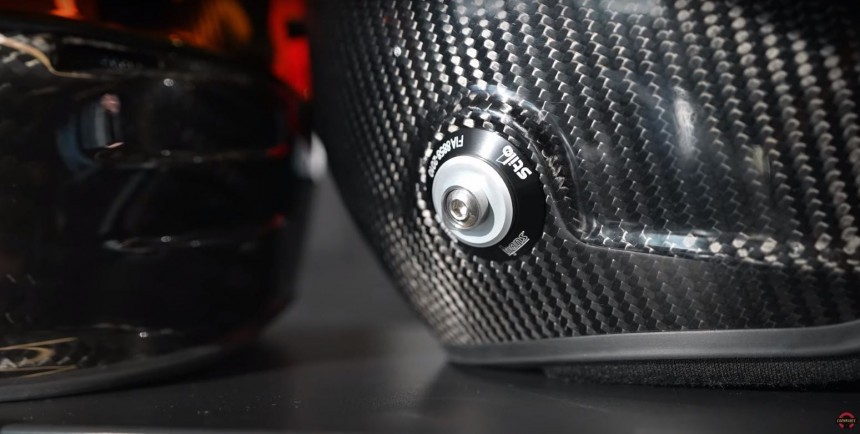If you want to attend a track day, compete in a local or national racing series, or just enjoy a round of go-karting, you must wear a helmet. The same applies if you want to ride a motorcycle or a scooter in most countries. But what kind of helmet should you get, and what is the difference between them? Well, this should help you when getting your first helmet.
Ideally, you will only use one helmet for every type of activity. That means one helmet to use in a car, one for your motorcycle, and one for motocross, or cycling for example. There is no one-helmet-does-all situation, and only a few moments when the same helmet can be used in multiple scenarios.
It is best we start with those scenarios, just to clear things up from the start. The few situations where it is acceptable to wear a motorcycling helmet inside a car involve grassroots motorsport events that come with reduced speed, or with less risk of injury than other competitions.
In most track day events aimed at beginners, it is fine to show up with a helmet that is meant for motorcycling use. Since you are in a vehicle that has a windshield, you can use an open-face helmet as well.
Mind you, that open face helmet design might be legal in many countries for motorcycling or scooter use, but it will not be permitted when going karting.
The reason is that bits of tire or other debris might be thrown towards your face, and the track does not want to see you get injured, so that is why even the cheapest places where you can rent a go-kart have a full-face helmet instead of an open-face design.
If you want to compete in an open-wheel vehicle, or just be a passenger in one of those, you will need a full-face helmet regardless. The same is a clever idea if you get to ride in an Ariel Atom or something similar – no windshield means that any debris will fly toward your face, and it will hurt immensely.
There is also a risk of losing one of your eyes if things go wrong, so do not imagine you will be cool if you do not wear a helmet on one of these, or that nothing can happen to you.
The same rules apply when riding on a trike or any vehicle that is not a motorcycle per se, but has an open cockpit. As long as your body is exposed to the elements, you should wear a helmet and protect the entirety of your face, not just your forehead, ears, the top and the back of your head.
Second, if you want to compete in karting on a higher level than just rented karts at your local track, you will have to get a specialized helmet for that activity. It comes with a different kind of shell, made from fiberglass instead of ABS plastic, and its interior padding features Nomex, a flame-retardant material.
There are also motorcycle helmets with a fiberglass or carbon fiber shell, but these will not have Nomex inside their liner. The karting helmets will have a homologation number on their back, while those meant for motorcycling use will have a different type of homologation - ECE 22.06 in Europe.
Helmets for motorsport use are not meant to be used on the road, while the latter may be allowed in grassroots forms of racing, but that is it.
Third, you can also get a helmet for motorsport use, which involves racing a four-wheeled vehicle. That kind of helmet should only be used in a race car, and it is not suitable to be used on a motorcycle or a scooter, even if it is meant to withstand an accident.
Just like other helmets, those for motorsport use will have a homologation number on their back, and it has an expiration date. Showing up to a pre-race inspection with an expired helmet will mean you will sit this one out if you do not get a valid helmet to use by the end of inspection.
Depending on the kind of motorsport activity that you plan to enter, you might need to have a helmet with an integrated communication device.
Other helmets have space to implement a special headset for motorsport use – which includes two speakers and a microphone, while others have those integrated and just need to be connected to the one in the vehicle. The system is not universal, as there are several standards, but there are adapters between them.
A full-face helmet is not required in most forms of motorsport where you have a closed cockpit, but some racing series only allow those, so be sure to check the rules before paying the entrance fee for an event.
Do not imagine you will get enhanced cooling when using an open-face helmet inside a vehicle, as you must keep the windows always closed, and racing cars do not have air conditioning. All you have is a roof vent, which does little – but better than noting when it is facing a hot cockpit on a summer day. It will also be loud, by the way.
Since human heads are not identical in size or shape, you should know that there are multiple helmet sizes, as well as shapes. In the case of motorcycle helmets, some manufacturers tend to make shells of a certain shape. An example from personal experience: your head might never fit right in a Shoei or an Arai, but will be fine in an AGV, or vice versa.
Fortunately, many manufacturers offer the possibility of interchangeable helmet padding, so you can get smaller or bigger cheek pads, as well as ear pads, or central pads.
Your helmet should fit snug, with room for your pinky finger between it and the area next to your eye, as well as enough room for your chin to allow yourself to open your mouth and speak.
Do not buy your first helmet online, sight unseen. Instead, go to a store that sells the kind of helmet that you are looking for, bring a balaclava from home, and try on several helmets while wearing said balaclava.
Keep each helmet that appears to ft on your head for several minutes, and chew gum to be sure you can move your chin freely, and that there is enough clearance for your cheekbones, as well.
Be sure to ask the salesperson in the helmet store to check your fit, as you might get a helmet that is too big for your head. It should not be able to spin around once placed on your head if you try to turn it. Those are just a few tips regarding fit and usage scenarios.
Refrain from buying a used helmet, as you never know if it has suffered any kind of damage, which leads to insufficient protection in the event of a crash. Some helmets may crack their shell when dropped, while others will have internal cracks. Dropped helmets are only good for office or garage decoration, not real-life use.
Watch Misha Charoudin's video below to learn more about helmets, as well as what to look for when getting your first.
It is best we start with those scenarios, just to clear things up from the start. The few situations where it is acceptable to wear a motorcycling helmet inside a car involve grassroots motorsport events that come with reduced speed, or with less risk of injury than other competitions.
In most track day events aimed at beginners, it is fine to show up with a helmet that is meant for motorcycling use. Since you are in a vehicle that has a windshield, you can use an open-face helmet as well.
Mind you, that open face helmet design might be legal in many countries for motorcycling or scooter use, but it will not be permitted when going karting.
If you want to compete in an open-wheel vehicle, or just be a passenger in one of those, you will need a full-face helmet regardless. The same is a clever idea if you get to ride in an Ariel Atom or something similar – no windshield means that any debris will fly toward your face, and it will hurt immensely.
There is also a risk of losing one of your eyes if things go wrong, so do not imagine you will be cool if you do not wear a helmet on one of these, or that nothing can happen to you.
The same rules apply when riding on a trike or any vehicle that is not a motorcycle per se, but has an open cockpit. As long as your body is exposed to the elements, you should wear a helmet and protect the entirety of your face, not just your forehead, ears, the top and the back of your head.
There are also motorcycle helmets with a fiberglass or carbon fiber shell, but these will not have Nomex inside their liner. The karting helmets will have a homologation number on their back, while those meant for motorcycling use will have a different type of homologation - ECE 22.06 in Europe.
Helmets for motorsport use are not meant to be used on the road, while the latter may be allowed in grassroots forms of racing, but that is it.
Third, you can also get a helmet for motorsport use, which involves racing a four-wheeled vehicle. That kind of helmet should only be used in a race car, and it is not suitable to be used on a motorcycle or a scooter, even if it is meant to withstand an accident.
Depending on the kind of motorsport activity that you plan to enter, you might need to have a helmet with an integrated communication device.
Other helmets have space to implement a special headset for motorsport use – which includes two speakers and a microphone, while others have those integrated and just need to be connected to the one in the vehicle. The system is not universal, as there are several standards, but there are adapters between them.
A full-face helmet is not required in most forms of motorsport where you have a closed cockpit, but some racing series only allow those, so be sure to check the rules before paying the entrance fee for an event.
Since human heads are not identical in size or shape, you should know that there are multiple helmet sizes, as well as shapes. In the case of motorcycle helmets, some manufacturers tend to make shells of a certain shape. An example from personal experience: your head might never fit right in a Shoei or an Arai, but will be fine in an AGV, or vice versa.
Fortunately, many manufacturers offer the possibility of interchangeable helmet padding, so you can get smaller or bigger cheek pads, as well as ear pads, or central pads.
Your helmet should fit snug, with room for your pinky finger between it and the area next to your eye, as well as enough room for your chin to allow yourself to open your mouth and speak.
Keep each helmet that appears to ft on your head for several minutes, and chew gum to be sure you can move your chin freely, and that there is enough clearance for your cheekbones, as well.
Be sure to ask the salesperson in the helmet store to check your fit, as you might get a helmet that is too big for your head. It should not be able to spin around once placed on your head if you try to turn it. Those are just a few tips regarding fit and usage scenarios.
Refrain from buying a used helmet, as you never know if it has suffered any kind of damage, which leads to insufficient protection in the event of a crash. Some helmets may crack their shell when dropped, while others will have internal cracks. Dropped helmets are only good for office or garage decoration, not real-life use.
Watch Misha Charoudin's video below to learn more about helmets, as well as what to look for when getting your first.
